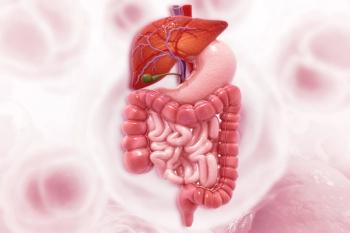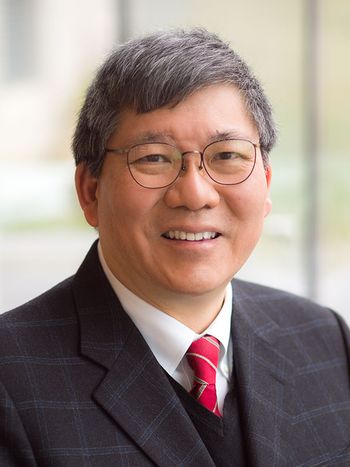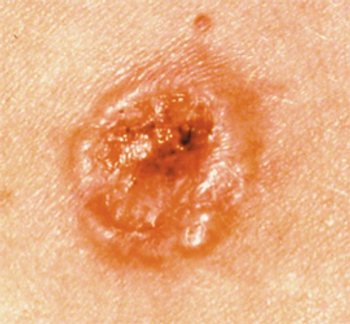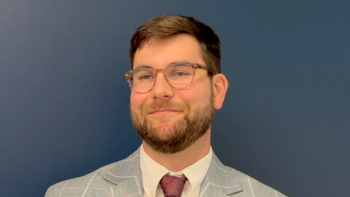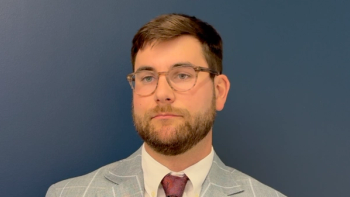
Developing a Bridge to Optimize Cellular Therapy Use in Multiple Myeloma
More work is needed to expand access to novel CAR T-cell therapies and bispecific agents among community oncologists, according to Al-Ola A. Abdallah, MD.
Developing a workshop to close the gap between community and academic oncologists is critical to address institutional concerns about administering chimeric antigen receptor (CAR) T-cell therapy and bispecific antibodies to patients with multiple myeloma and other malignancies, according to Al-Ola A. Abdallah, MD.
At the 2025 National Immune Cell Effector Therapy (ICE-T) Conference, CancerNetwork® spoke with Abdallah about prevalent ideas regarding the use of novel cellular therapies highlighted throughout the meeting. Specifically, Abdallah focused on themes that appeared in the meeting’s “Myeloma & Other Plasma Cell Disorders” session, which included a series of oral presentations and a live panel discussion with the speakers and the audience.
Abdallah, an associate professor of medicine and the director of the Plasma Cell Disorder Clinic in the Division of Hematologic Malignancies and Cellular Therapeutics at the University of Kansas Medical Center, emphasized the importance of educating community oncologists to bolster the use of new cellular therapies in an outpatient setting. He also described strategies for sequencing these agents across multiple lines of therapy and sustaining quality of life in patients who experience toxicities such as cytopenia and infection.
“We need to start focusing on community oncologists and see exactly how we can provide more access for treatment with these [agents]. There has to be a better pathway to do that,” Abdallah stated. “Improving access through the community oncologists will be the best thing we have to develop newer strategies and [ensure] that community oncologists cover their bases, treat [toxicities], feel more comfortable, and increase referrals if needed.”
CancerNetwork: What were some key themes that emerged across the different presentations featured in the “Myeloma & Other Plasma Cell Disorders” session?
Abdallah: Our major focus was about the cellular therapies, the main 2 major treatments, the CAR T-cell [therapies] that are approved right now, and some clinical trials that we believe will have a potential approval in the future. Also, we had a great discussion about the bispecific treatments that focus on the 3 BCMA-directed [therapies] as well the GPRC5D treatments that we have approved. Majorly, we talked about the challenges that we saw, especially the concerns of community oncologists [regarding] access to either the CAR T-cell [therapy] or access to management for bispecific treatments, especially with some of the [adverse] effects that are concerning. [These toxicities include] a risk of grade 3/4 infection down to disturbance of the quality of life for patients who receive drugs like talquetamab-tgvs [Talvey] that affect their taste—like dysgeusia—and nail and skin changes. That was our biggest focus on these cases, more about updates about these standard-of-care treatments and management of some of these [adverse] effects.
What points stood out to you the most during the session’s panel discussion? How can these ideas be applied to clinical practice?
The biggest focus was about how we can apply most treatment [in the] outpatient [setting]; that was the biggest challenge. If we apply it outpatient, we have a big chance that more community oncologists will be able to administer the treatment. One of the biggest points was that every institution is starting to use drugs like tocilizumab [Actemra] as cytokine release syndrome [CRS] prophylaxis in order to prevent reactions or any [adverse] effects. That helps a lot to improve [or] decrease the hospitalization for these patients. That can be a potential impact for administering the treatment outpatient and [among] community oncologists, which was the biggest goal of this discussion.
As new data continuously emerge for these novel cellular therapies and immunotherapies, what should practices keep in mind as part of the clinical decision-making process?
The CAR T-cell [therapies] and the bispecifics are emerging quickly. We do not have a great answer [for sequencing]. The challenges here are that when CAR T-cell [therapy] has been approved, it was after 4 lines of therapy. It was an easy decision about how to give it to these patients. Now CAR T has moved to a second line of therapy. The challenges are, do we give that to patients directly or wait until they [experience] relapse a second or third time? Mainly, [that is because] there are some [adverse] effects that we are still concerned about, and we are not talking about the CRS and immune effector cell–associated neurotoxicity syndrome. Mainly, we are talking about other long-term [adverse] effects like risk of infection as well as secondary malignancy.
One of the major questions here is, do we have to give every single patient who [has a] relapse after a second line of therapy CAR T-cell [therapy]? The word is that it’s a no-brainer. I do not think that’s the right answer. We should have to evaluate case by case in order to provide the best benefit for our patients when using the CAR T-cell therapy.
What are some common toxicities associated with these cellular therapies, and what strategies can help mitigate them while maintaining quality of life?
We try to evaluate these patients after the CAR T-cell therapy to decrease their risk [by] giving growth factor shots and administering other medications that help their cytopenia. Stem cell boost has been one of the best treatments; unfortunately, it's not always available for each patient.
Regarding the risk of infection, our standard of care has been giving intravenous immunoglobulin [IVIG] for all patients, which, unfortunately, is not the same as patients receiving CAR T-cell therapy, not receiving any other treatments, and not coming every month for that. That impacts the promise of quality of life. We should provide it [through] fewer office visits. But these are the things, like stem cell boost for patients who have prolonged cytopenia, that can hopefully preserve their quality of life. [Regarding] IVIG, the benefit of coming every month is better than having a higher risk of infection, so that can help a lot for the future.
What are some key themes that others should take away from this year’s National ICE-T Conference?
The whole purpose of [the meeting] is to close that gap [between community and academic oncologists]. Our goal here is to develop that bridge, our network between academic and community oncologists. We are not planning just for education; we are planning for engagement and trying to develop [an] actual workshop between our academic centers and the community oncologists in order to address their concerns about providing bispecifics and CAR T-cell [therapy] at other institutions. That’s our biggest goal. This is not like we are going to give some presentations and leave. This is going to be, hopefully, a future collaboration between us and the community oncologists.
Majorly, we hope to have more collaboration about the potential role of the cellular therapy. It’s extensive not only in multiple myeloma and lymphoma [but] also in solid cancers. This means there has to be a future development of access to treatment, how to manage the [adverse] effects, and how to overcome all obstacles. It’s tough to provide CAR T-cell and cellular therapy right away, but it’s something that we have to think about in the future, especially [because] we have many cancers other than multiple myeloma and lymphoma. We are going to start using more cellular therapies in the future.
Newsletter
Stay up to date on recent advances in the multidisciplinary approach to cancer.


